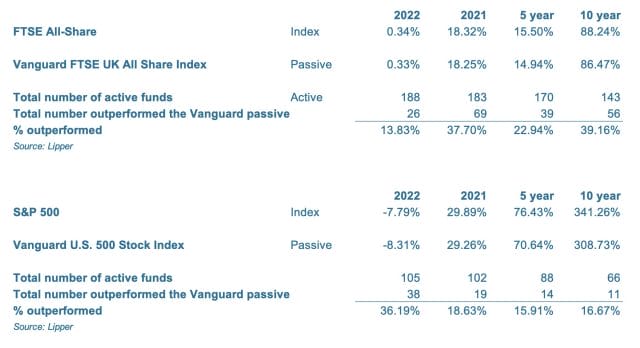In this article:
- Index trackers are beating their stock-picking counterparts
- It comes as the proportion of assets in index funds continues to grow
- Stock pickers are still very important to our portfolios, particularly in today’s market
Are funds with human stock-pickers worth it?
Which is best for building our wealth: buying cheap index trackers that will hand back the same returns as the market they track, for example the footsie or S&P, or choosing a more expensive fund with a human stock-picker selecting investments in the hope that they will beat the market?
Watch our jargon busters to find out more
It’s a question the investment industry has been grappling with ever since late pioneering entrepreneur Jack Bogle, of US investment powerhouse Vanguard, launched the first index fund in 1976. He was sick of seeing mutual funds with fund managers at helm performing poorly but still charging investors exorbitant fees for the privilege.
The funds Mr Bogle launched were designed simply to replicate stock market indices. Usually weighted by companies’ total market value, index trackers buy the same shares in the same proportions. His theory was that, even though there was no chance of beating the market, there was no chance of performing much worse than it either (we must deduct fees), and given that the tracker would cost far less than funds employing investment professionals, a lower drag on investor’s returns made trackers a far more appealing investment.
In truth, market returns at low fees can be great for your returns over time; but good fund managers with a reputation for consistently beating the market can also create vast amounts of wealth far beyond a tracker, and there are still plenty out there. This is where the debate intensifies: are we able to pick consistently successful stock pickers that are worth their fees? Do they exist?
How popular have index trackers become?
Index trackers are growing in popularity all the time, particularly as the new breed of do-it-with-me platforms, also known as robo-advisors, all tend to use index trackers. The last decade was a steal in particular: global money printing by central banks such as the Bank of England elevated the price of almost all assets and markets. Simply buying an index was often a simple (and cheap) way to make money.
As a result, at the beginning of 2010, index trackers held 10% of the total assets invested in funds; by the end of 2022, this figure was 25%.
What does the data tell us about which strategy is better?
It tells us that Mr Bogle had a point. After fees, many active funds – as funds with stock pickers are known – do not beat the market’s associated tracker, known as passive funds. Below, we show you the data for US and UK markets, thanks to data from Hargreaves Lansdown, the UK largest investing platform.

Should we just be investing in passive funds then?
We spoke to a senior analyst at Hargreaves Lansdown, Hal Cook, to find out what he thought of this question and the data:
“This is all a bit damning for active funds: they seem to struggle to outperform with any sort of consistency and are becoming less popular over time. So, shouldn’t we all just switch? I’m going to continue to answer that with a no. There are a couple of reasons why.
“Firstly, the performance data here is averages: while the average manager didn’t outperform, there are some that did. And there are some that do manage to outperform consistently over time. Secondly, this data just tells you if something outperformed or underperformed the passive. It doesn’t tell you by how much. One year of large outperformance and four years of small underperformance can still result in outperformance over the long-term.”
At Steps to Investing, we would agree with this. And would add that the likely answer to the active or passive approach comes back to the most important concept in investing: diversification. We think a good strategy is too have both, and many professional fund selectors that we know would agree with that.
A good active fund has the ability to build wealth over time, but you need to be prepared that even the very best fund managers go through years where they underperform the wider market. This is why having passive funds included in your portfolio is a good idea: it reduces the underperformance risks you face with active funds and ensures the market return. In addition, it also blends higher costs with lower costs, giving you an average fee that’s somewhere in the middle and a lower drag on your returns over time.
We also think the market conditions have changed to how they’ve been prior to the pandemic. Money printing has gone, higher interest are probably here to stay, and a very bifurcated market of both winners and losers seems likely. In this scenario, the value of having expert stock pickers weeding out the likely losers seems like a smart strategy.
Need help with choosing a stock picking fund?
No fear! Read our blog ‘How to choose a fund’ by renowned money journalist Faith Archer.